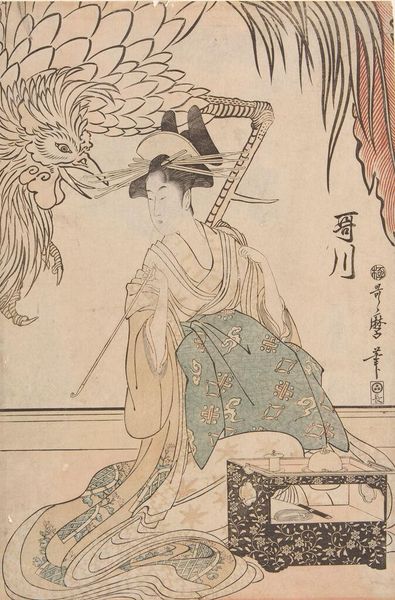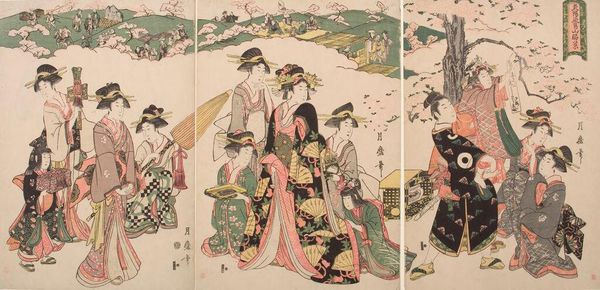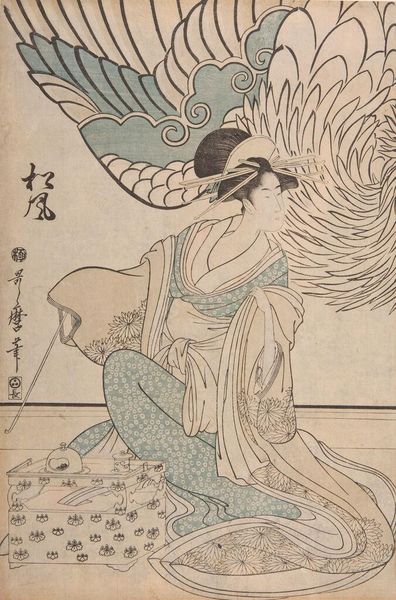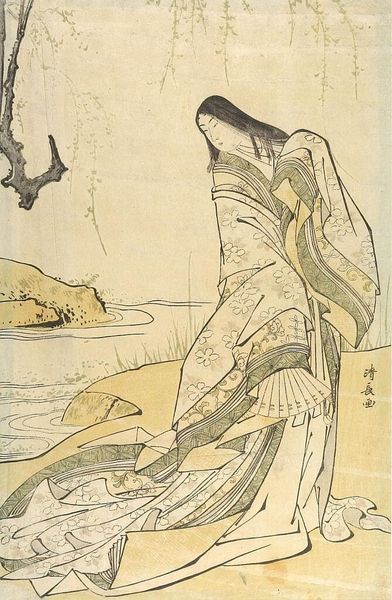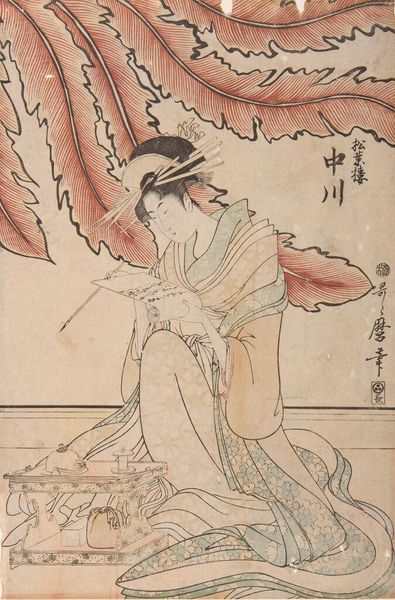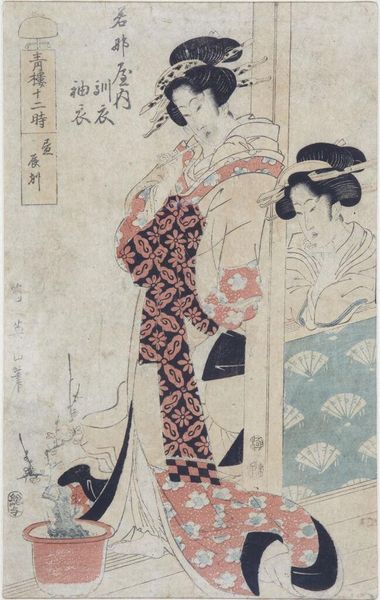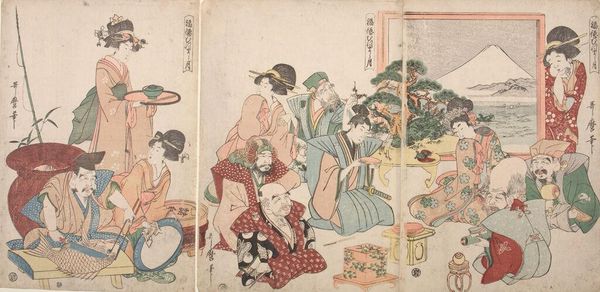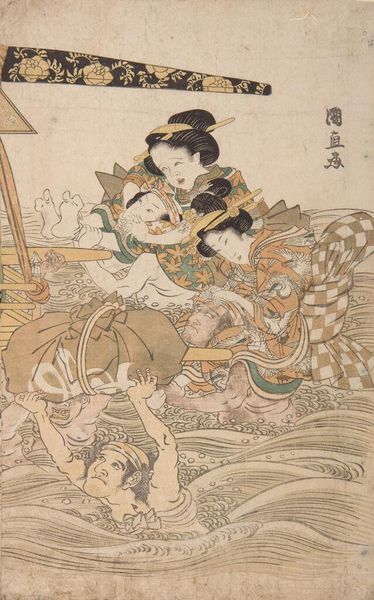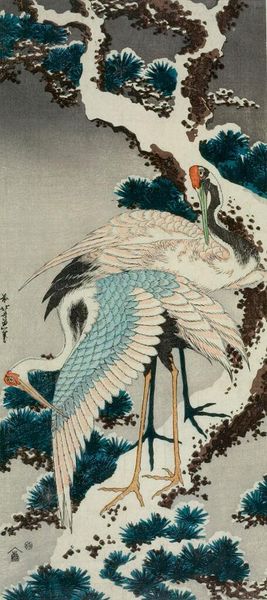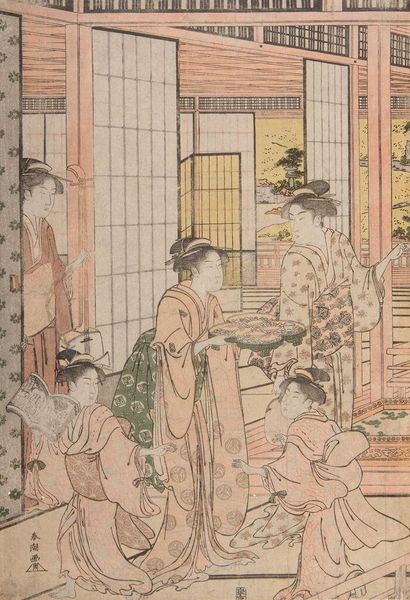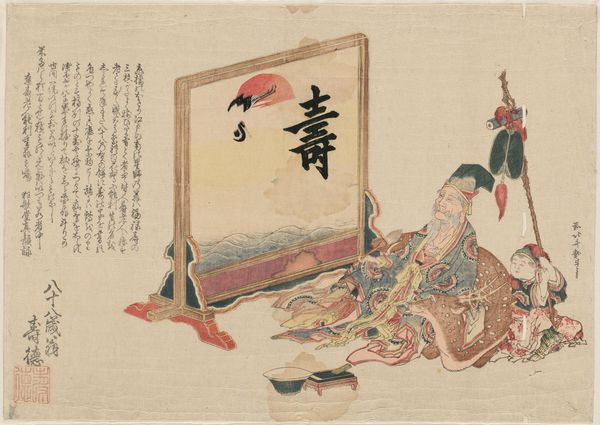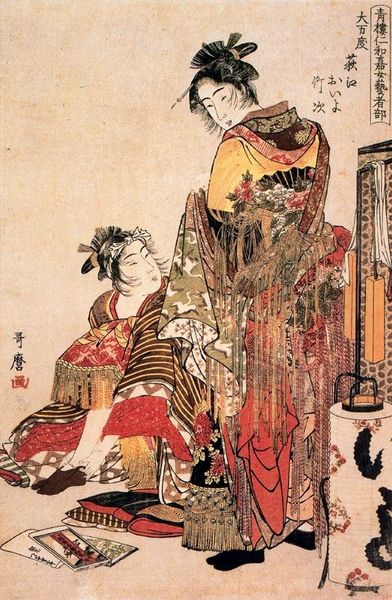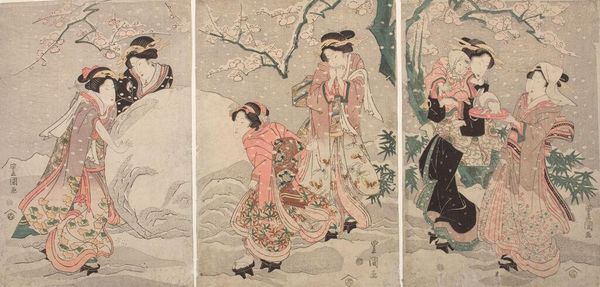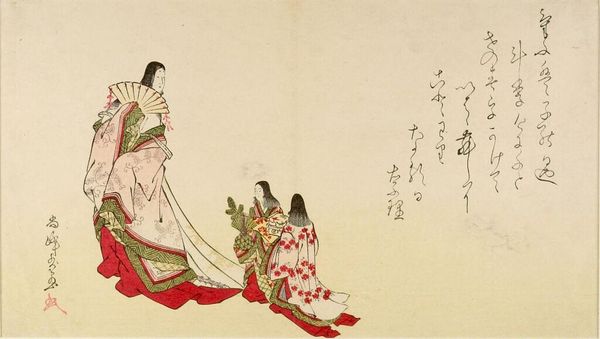
Courtesans of the MatsubarÅ: Nakagawa, Utagawa, Matsukaze Woodblock print triptych (nishiki-e); ink and color on paper
0:00
0:00
Dimensions: Asian and Mediterranean Art
Copyright: CC0 1.0
Curator: This triptych is Kitagawa Utamaro’s "Courtesans of the MatsubarÅ: Nakagawa, Utagawa, Matsukaze," created around 1799. Editor: There's a quiet elegance to the composition. The flowing lines of the robes contrast with the sharp details of the phoenix feathers. Curator: It's intriguing how Utamaro depicts these women within a cultural context of performance and expectations, their identities shaped by societal roles. Editor: Yes, and the textures! The printmaking technique allows for such intricate patterns on the kimonos, mirroring the elaborate phoenix imagery behind them. Curator: Precisely. The phoenix itself is a symbol of renewal, but in this setting, it evokes the commodification and performativity of female identity. Editor: I see the phoenix less as a critique and more as a formal device—a visual echo of the courtesans' refined beauty. Curator: Perhaps the ambiguity is intentional, a reflection of the courtesan's complex position within the Edo period. Editor: Regardless, the rhythmic interplay of line and form is compelling. Curator: Absolutely, it reveals the multifaceted nature of identity and representation.
Comments
No comments
Be the first to comment and join the conversation on the ultimate creative platform.
